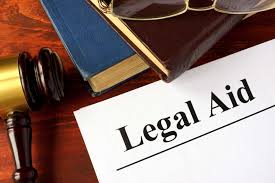Legal aid services in India are rooted in the constitutional promise of justice for all, irrespective of economic or social status. The framers of the Constitution envisaged a system in which the rights guaranteed to citizens would not remain mere paper declarations but would be accessible to every individual, including those without financial means. Article 39A, introduced by the 42nd Constitutional Amendment in 1976, directs the State to provide free legal aid to ensure that justice is not denied to any citizen by reason of economic or other disabilities. This constitutional mandate has since become the bedrock of India’s legal aid framework, supplemented by statutory provisions, institutional mechanisms, and judicial interpretations.
The Legal Services Authorities Act, 1987, operationalized the constitutional vision by creating a nationwide network of legal services institutions at the national, state, district, and taluka levels. The National Legal Services Authority (NALSA) oversees these bodies, formulating policies and coordinating programs to provide free legal services. Eligibility for free legal aid is extended to marginalized groups such as women, children, Scheduled Castes, Scheduled Tribes, victims of trafficking, persons in custody, and individuals whose annual income does not exceed prescribed limits. The scope of services includes representation in courts, preparation of legal documents, and legal advice.
Despite this structured framework, the real challenge lies in accessibility for the marginalized. Legal aid must reach those who need it most—people living in remote rural areas, migrant workers, slum dwellers, and others on the socio-economic periphery. For many, the barriers are not only financial but also informational and cultural. Illiteracy, lack of awareness about legal rights, mistrust of formal institutions, and language differences often prevent marginalized individuals from seeking legal help. Even when they are aware, logistical hurdles such as distance from legal aid offices, inadequate infrastructure, and the shortage of trained lawyers limit effective access.
Judicial pronouncements have consistently emphasized that legal aid is not a charity but a right. In Hussainara Khatoon v. State of Bihar (1979), the Supreme Court highlighted that the right to free legal services is an essential ingredient of a fair trial, a fundamental right under Article 21. Similarly, in Khatri v. State of Bihar (1981), the Court held that the State is constitutionally obliged to provide legal representation to an accused from the time they are first produced before a magistrate, regardless of whether the accused asks for it. Such decisions have entrenched the principle that legal aid is intrinsic to the rule of law and equality before the law.
Efforts to enhance accessibility have included innovative approaches like Lok Adalats, legal literacy camps, and mobile legal aid clinics, which bring services closer to remote and underprivileged communities. The expansion of technology-based initiatives, such as online legal advice platforms and helplines, has further opened new avenues for outreach. However, these initiatives require continuous monitoring to ensure they serve the intended beneficiaries and do not become tokenistic.
True accessibility demands not only structural presence but also functional efficiency. This involves adequate funding, training of legal aid lawyers, public awareness campaigns, and collaboration with civil society organizations that work directly with marginalized groups. Bridging the gap between entitlement and delivery also requires sensitivity to the socio-cultural realities of beneficiaries, ensuring that services are provided in a language and manner they can understand and trust.
Legal aid services, when effectively delivered, are transformative. They empower individuals to claim their rights, challenge injustice, and participate meaningfully in the democratic process. For the marginalized, access to legal aid can mean the difference between continued exploitation and the ability to live with dignity. As India continues to strive for inclusive growth and social justice, the strengthening of legal aid mechanisms is not merely a welfare measure but a constitutional imperative—an essential step toward making justice truly universal and accessible.
CONTRIBUTED BY: SOMYA BHARTI (INTERN)

